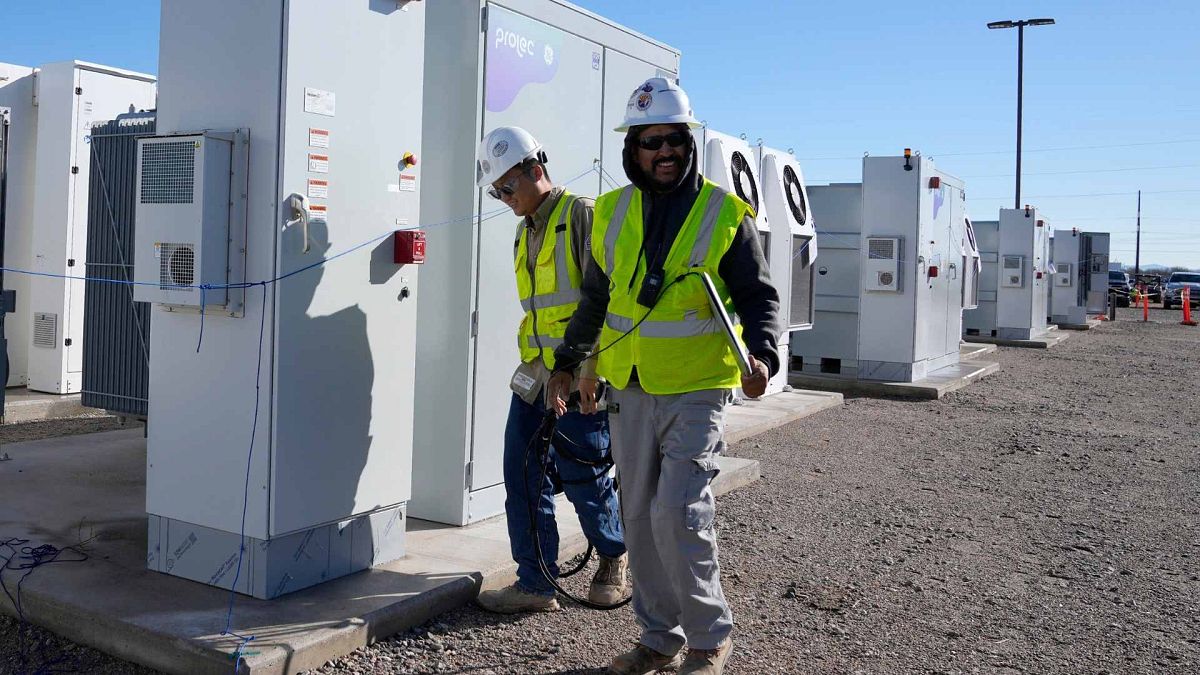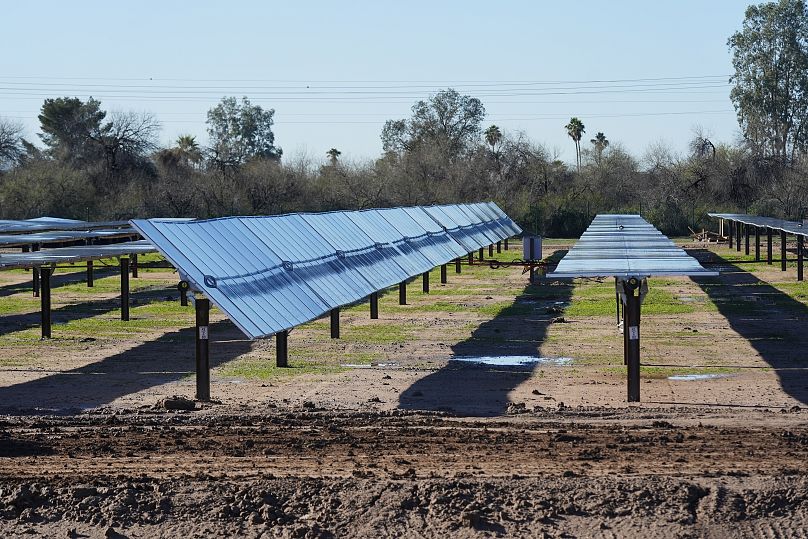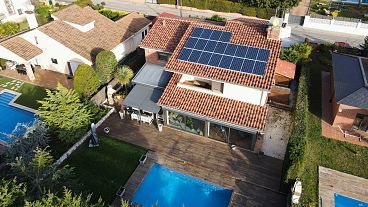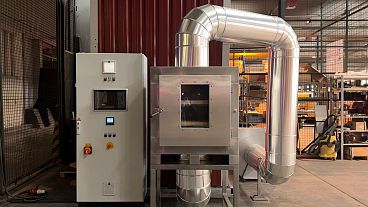Batteries come into their own when air conditioner usage cranks up during heatwaves.
Deep in the Arizona desert, a Danish company is building a massive solar farm that includes batteries that charge when the sun is shining and supply energy back to the electric grid when it's not.
“Solar farms only produce when the sun shines, and the turbines only produce when the wind blows,” said Ørsted CEO Mads Nipper. “For us to maximise the availability of the green power, 24-7, we have to store some of it too.”
Back in Arizona, Ørsted’s Eleven Mile Solar Center covers 2,000 acres in rural Pinal County.
It has 857,000 solar panels and more than 2,000 cubes that look like large shipping containers but contain battery modules. Ørsted also has large solar and storage projects in Texas and Alabama, and in Europe.
When the Arizona facility opens this summer, most power from the solar farm will go to Facebook owner Meta's data center in Mesa. The solar power not needed by Meta, in addition to the power stored in the batteries, will go to the local utility's customers. The new batteries can ensure power to roughly 65,000 homes during peak hours of demand.
“What I think is exciting is just how rapidly this market is moving," says Yayoi Sekine, head of energy storage at BloombergNEF. “There's so much pressure for the U.S. and different regions to decarbonize, and storage is one of the major technologies to enable that. There's a lot of momentum."
Why are batteries so crucial to the green transition?
Batteries allow renewables to replace fossil fuels like oil, gas and coal while keeping a steady flow of power when sources like wind and solar are not producing. For example, when people are sleeping and thus using less electricity, the energy produced from wind blowing through the night can be stored in batteries - and used when demand is high during the day.
What are water, sand and gravity batteries?
As the renewables increasingly replace fossil fuels, the need for batteries grows ever better.
European companies have responded with fascinating and innovative ways to store energy.
In 2022, Switzerland built a water battery 600 metres underground. Scotland followed suit in 2023 and they are currently building a giant water battery inside a mountain.
Gravity batteries, which rely on weights into energy generators, are being built in Finland.
Finland is also leading the way with a sand battery which will cut a town's emissions by 70 per cent.
Heatwaves: When batteries come into their own
The US has the second most electrical storage in the world, after China. In 2023, the US added an estimated 7.5 gigawatts - 62% more than in 2022, according to the BloombergNEF and the Business Council for Sustainable Energy factbook. That amount can power 750,000 homes for a day and brings the total amount of installed capacity nationwide to nearly enough for 2 million homes for one day, according to BloombergNEF.
California leads in energy storage as it aggressively cuts greenhouse gas emissions. It has twice as much as any other state.
Batteries proved their value there in September 2022, as the Western US was experiencing a long heatwave that sent temperatures into the triple digits. Electricity demand reached the highest the state had ever seen on 6 September 2022, as people cranked up air conditioners.
William Walsh, vice president for energy procurement and management at the local utility company, credits the batteries added to the grid between 2020 and 2022 with helping to avoid blackouts. Two years earlier, there were rolling electricity outages in California during a similar extreme heatwave.




